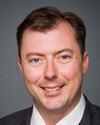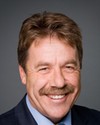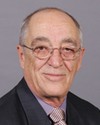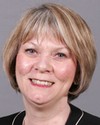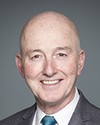It is up to you to decide if you would like me to briefly summarize what I saw and heard on Monday, Tuesday and Wednesday. I will do it for your information. This symposium was very interesting. I think the problems it addressed were fascinating. There were so many information sessions offered that it was hard to choose which ones to attend.
I think I was the only one who was not a psychologist or a psychiatrist, other than the symposium organizers. More than 450 people, psychologists and psychiatrists from all over Canada, the United States and some European countries as well, met to review the current situation.
My first reaction was to notice how far behind we are in terms of research. It is not just in the area of post-traumatic stress or human psychological behaviour that our American friends are much more advanced. In terms of post-traumatic stress, we are very far behind, but fortunately there has been some good research conducted in the United States, which we can use. They have been interested in this since the Vietnam War, while we started taking an interest in it barely five years ago. That is hard to believe.
But there is hope. I brought the program from the symposium to provide you with names of experts, such as Matthew Friedman, one of America's foremost authorities on this topic. During his presentation, he referred to the findings of young psychologists from McGill University, the University of Toronto and the University of Manitoba. So there is an exchange, and our young academics are perhaps better informed than older Canadian psychologists about the experiments conducted by the Americans.
I can also say—although not with as much certainty since I did not meet enough people from these countries—that we are no more advanced or farther behind than France, Belgium, Germany, etc.
What interested me particularly, was to learn who can suffer from post-traumatic stress, and that post-traumatic stress is not restricted to our soldiers. There are about 10 or 12 types of stress that can affect some people at any time in their lives. For example, it could occur following a rape or an automobile accident in which the person witnesses the death of a best friend. These are events of the same type, but naturally, it is much more likely for them to happen on the battle field than in everyday life.
What can we do? First of all, people who are experiencing stress must be able to recognize that they are having problems and realize that they must see someone. Second, the quicker this is done, the better the chances of healing, not 100%, but I think the figure provided was 67%. Yes, I am looking at my notes, and the figure was 67%.
So I have realized the importance of increasing awareness among the young soldiers who are enlisting about this phenomenon which could occur. I also realized that there was a serious shortage of professionals in Canada and Quebec able to treat this condition.
Because of Canada's geography—we have three or four large, urban centres found within one strip of land, while the rest of the country is mainly rural—it is difficult to establish a front line for intervention. When a young soldier suffering from post-traumatic stress begins to feel like something is wrong, he or she does not need to see a specialist for an initial consultation. However, the person he or she does consult must be very familiar with that condition. If PTSD is identified, the patient could be referred to a centre such as Sainte-Anne Hospital, for example.
There is still a lot of work to be done. Most of the psychologists there said we need to find a way to establish networks to provide primary care and initial contact in Canada's more remote areas. This aspect is crucial. We are starting to see this in rural areas, but this will take some time.
As an example, Dr. Friedman said that, since the United States began their research into this area shortly after the Vietnam war, every year, more and more psychologists and psychiatrists are earning their degrees, specializing in this area. He told me an interesting fact during a one-on-one conversation. According to him, we should not be too quick to trust our statisticians, because their calculations are inaccurate. I asked him what percentage of our young soldiers return from combat suffering from various degrees of post-traumatic stress—the intensity is not always the same—and he said that, in the United States, that figure is 39%. Statistics suggest that, in Canada, the percentage is approximately 12%.
My next comment is addressed mainly to Betty. I was surprised to learn—and I would have never believed—that women are more likely to suffer from post-traumatic stress than men. The difference, in terms of percentage, is minimal. The difference is 10% compared to 8% in the general public, not in the army. I was surprised by that. I though the rate would be the same or almost the same. But no, 10% of women suffer from post-traumatic stress compared to 8% of men. What is the reason for this difference? I do not know, I am not an expert. I learned this during the last day, yesterday, but I did not really understand what they were saying.
The three days were very worthwhile. Another surprising piece of information that must be considered is that approximately 25 to 30% of young people who begin treatment leave the program prematurely. Why? No one knows. Psychologists do not know why, but between 25 and 30% of young people who begin treatment abandon it after three or four sessions. Psychologists do not know how to retain them. The success rate of treatment is 67% and the time it takes for the treatment to be successful can vary between a few months and a few years.
I asked about post-traumatic stress among traditional wartime veterans—those we know are now in their 80s—and I learned that the stress dates back so far back that it is nearly impossible for the victims to heal. We can try to make the illness less painful by encouraging them to have a more active social life and become more involved in their families, with more intergenerational contact. We can help them alleviate their problem, but healing PTSD or post-traumatic stress is nearly impossible at that age, because they do not have many years left. Their suffering could take 10, 15 or 20 years to heal.
I could go into greater detail. Furthermore, I asked for a report on all the sessions, and I could forward you that report, if you like. There were 33 sessions in three days, and most were taking place at the same time. I was able to attend about 15% of them. I missed one session that I would have liked to attend, on suicide among people suffering from post-traumatic stress. Unfortunately, I had already decided to go to another, more important session. It would have taken three or four people to attend all the sessions.


